In this post, you can discover the (2018 & 2019) Peugeot 508 fuse box diagram. We will provide you with essential information about the location of the fuse panels inside the car and explain the assignment of each fuse, offering a clear and comprehensive understanding.
Table of Contents
The Peugeot 508, being a popular car model, has an intricate electrical system that relies on fuses to protect various components from electrical overloads and potential damage. The fuse box acts as a crucial control center for these fuses, ensuring the smooth functioning of the vehicle’s electrical circuits.
Note: To get the fuse allocation tables and diagrams for your Peugeot vehicle, you can visit a PEUGEOT dealer or a certified workshop. It's crucial to avoid replacing fuses not listed in these tables as it could lead to severe vehicle malfunctions. If unsure, always reach out to a PEUGEOT dealer or qualified workshop for assistance.
Peugeot 508 Fuse Box Location
The fuse box in the second-generation Peugeot 508 is typically located in a specific area of the car’s interior, making it easily accessible for maintenance purposes. Commonly, you can find the fuse box under the dashboard on the driver’s side or sometimes in the engine compartment. Always consult your car’s user manual or seek professional assistance to precisely identify the fuse box location in your Peugeot 508 model.
The cigar lighter (power outlet) fuses in the Peugeot 508 are the fuses F31 (Rear 12 V socket), F32 (Cigarette lighter/Front 12 V socket) in the Instrument panel fuse box #1, and fuse F6 (12 V socket in boot) in the Instrument panel fuse box #2.
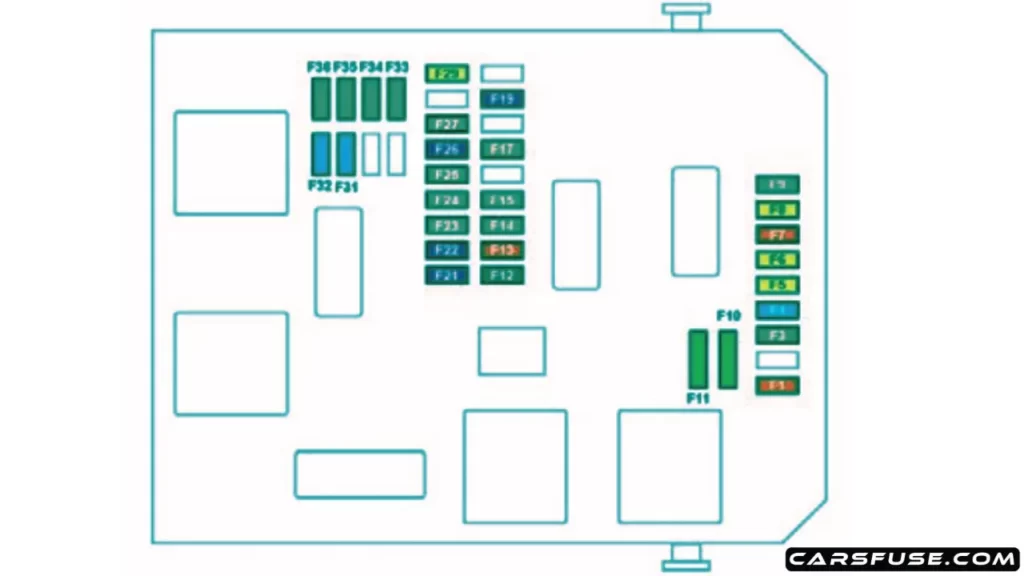
Fuse Box 1
| Fuse or relay number | Fuse amp rating | Protected components |
|---|---|---|
| F1 | 10 A | “Electrochrome” mirrors |
| F3 | 5 A | Adaptive 3D rear lamps |
| F4 | 15 A | Horn |
| F5 | 20 A | Rear screenwash pump (SW) |
| F6 | 20 A | Front screenwash pump |
| F7 | 10 A | Rear USB sockets |
| F8 | 20 A | Rear wiper (SW) |
| F10 | 30 A | Central locking |
| F11 | 30 A | Tailgate locking/unlocking |
| F14 | 5 A | Emergency and assistance calls, alarm control unit |
| F24 | 5 A | Hi-Fi amplifier |
| F27 | 5 A | Alarm siren |
| F29 | 20 A | Touch screen audio system |
| F31 | 15 A | Rear 12 V socket |
| F32 | 15 A | Cigarette lighter/Front 12 V socket |
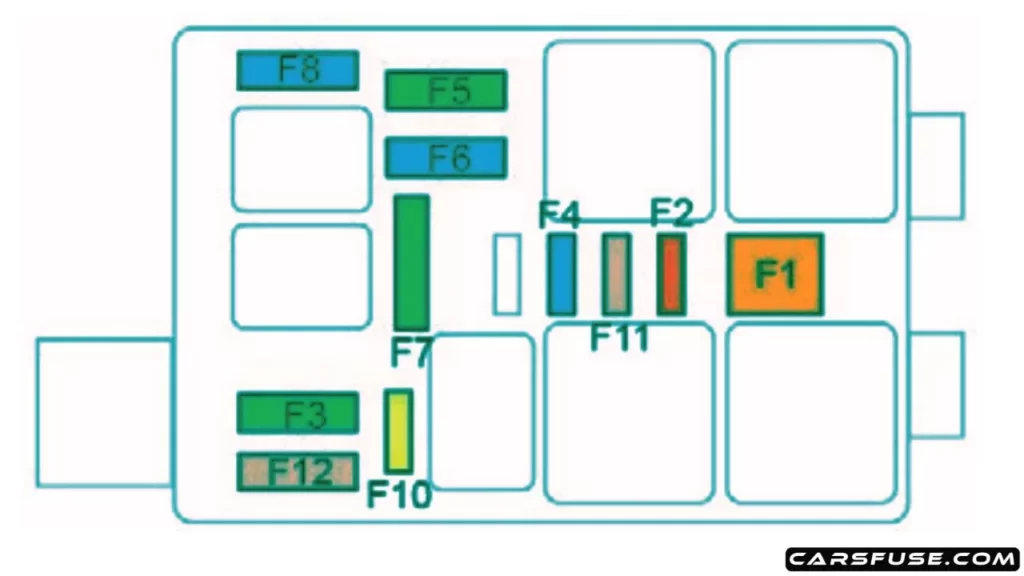
Fuse Box 2
| Fuse or relay number | Fuse amp rating | Protected components |
|---|---|---|
| F2 | 10 A | Heated door mirrors |
| F3 | 40 A | Front one-touch windows |
| F4 | 15 A | 12 V socket in the boot |
| F5 | 40 A | Rear one-touch windows |
| F6 | 15 A | 12 V socket in the boot |
| F7 | 30 A | Heated seats |
| F10 | 20 A | Trailer interface unit |
| F12 | 25 A | Hi-Fi amplifier |
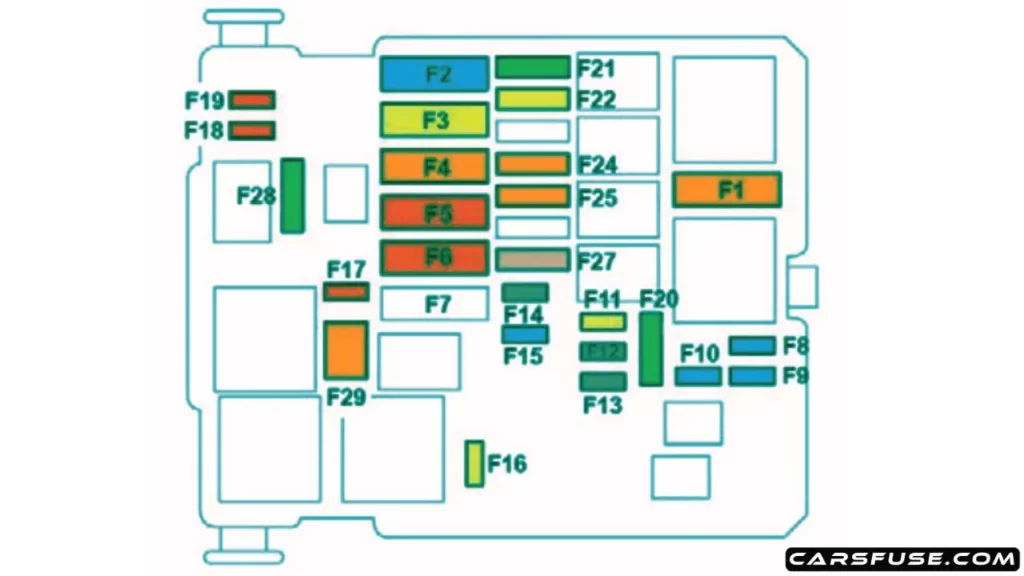
Engine compartment fuse box
| Fuse or relay number | Fuse amp rating | Protected components |
|---|---|---|
| F5 | 50 A | Left-hand dipped beam headlamp, static cornering lamps, direction indicator side repeaters, left-hand direction indicators, front left-hand and rear right-hand side lamps, left-hand brake lamps, and number plate lamps |
| F16 | 20 A | Daytime running lamps |
| F18 | 10 A | Right-hand main beam headlamp |
| F19 | 10 A | Left-hand main beam headlamp |
| F24 | 40 A | Trailer interface unit |
| F27 | 25 A | Right-hand dipped beam headlamp, right-hand reversing lamps, left-hand foglamps, rear left-hand side lamps, third brake lamp |
| F29 | 40 A | Windscreen wipers |
| F32 | 80 A | Left-hand dipped beam headlamp, static cornering lamps, direction indicator side repeaters, left-hand direction indicators, front left-hand and rear right-hand side lamps, left-hand brake lamps, and number plate lamps |
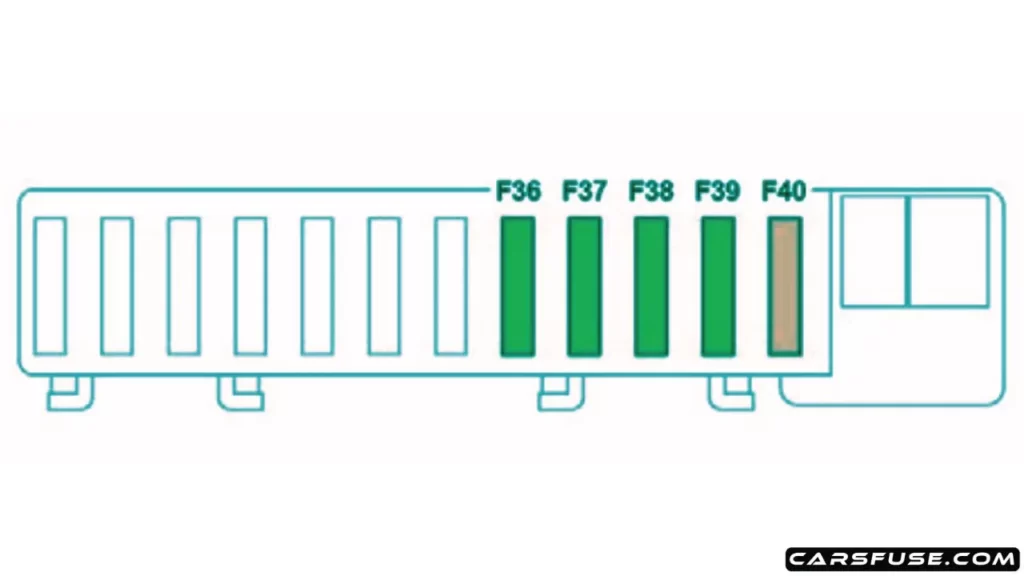
Passenger compartment fuse box
| Fuse or relay number | Fuse amp rating | Protected components |
|---|---|---|
| F36 | 30 A | Panoramic sunroof |
| F37 | 30 A | Panoramic sunroof blind |
| F38 | 30 A | Electric seats |
| F39 | 30 A | Motorized tailgate unit |
| F40 | 25 A | Additional heating |
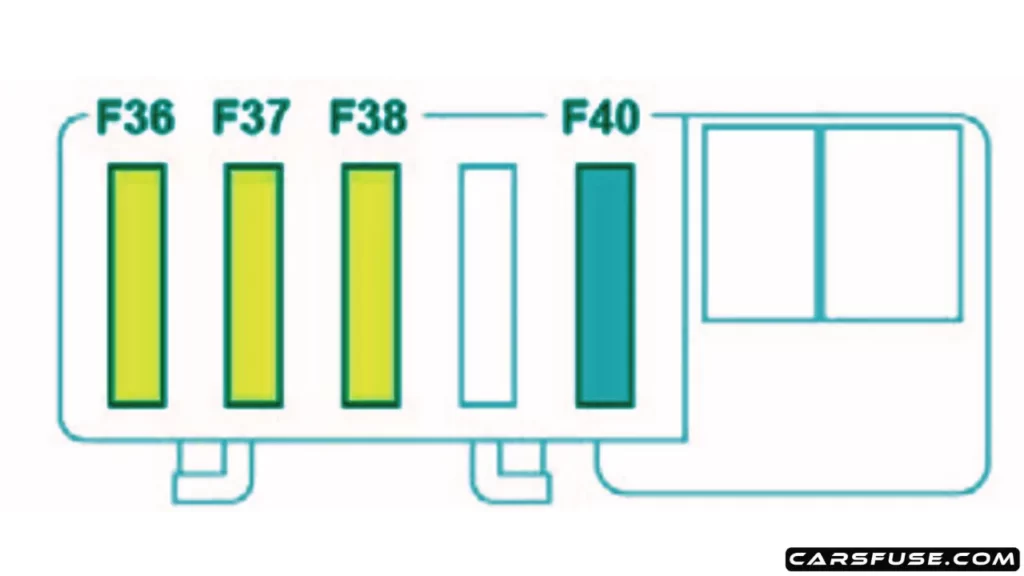
Trailer Interface Unit
| Fuse or relay number | Fuse amp rating | Protected components |
|---|---|---|
| F36 | 20 A | Brake lamps, reversing lamps (trailer) |
| F37 | 20 A | Sidelamps, direction indicators (trailer) |
| F38 | 20 A | Interior lighting (caravan) |
| F40 | 2 A | Audible signal (trailer) |
To provide a comprehensive guide on "How to read a car fuse box diagram?" please click the link. It aims to help readers gain the knowledge and skills needed to interpret these diagrams correctly. By understanding car fuse diagrams, readers can confidently locate fuses, determine their functions, and troubleshoot electrical problems in their vehicles.
Things to Know before changing a fuse
To work on a fuse, you must use special tweezers to extract the fuse from its housing and check the condition of its filament, Always replace the defective fuse with a fuse of the same rating (same color); using a different rating could cause a malfunction (risk of fire).
- Identify the cause of the failure and correct it.
- Switch off all electrical consumers.
- Immobilize the vehicle and switch off the ignition.
- Identify the defective fuse using the current allocation tables and diagrams.
Conclusion on (2018/2019) Peugeot 508 Fuse Box Diagram
In summary, understanding the fuse box diagrams of your Peugeot 508 is vital for the proper maintenance and troubleshooting of electrical issues in your car. Being aware of the fuse locations and their assignments can save you time and money in case of minor electrical problems, and it also ensures the safety and efficiency of your vehicle’s electrical system. Always refer to the official documentation or seek professional assistance if you have any doubts or concerns regarding the fuses in your Peugeot 508.
Tom Smith is a passionate car mechanic and automotive enthusiast, specializing in the intricate world of car fuse boxes. With years of hands-on experience under the hood, he has earned a reputation as a reliable expert in his field. As the founder and content creator of the popular blog website 'carsfuse.com,' Tom has dedicated himself to sharing his extensive knowledge of car fuse boxes and electrical systems with the world.

